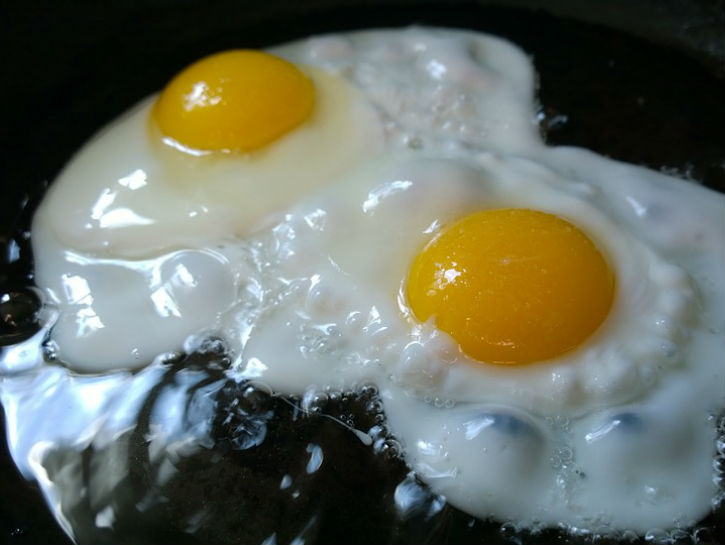A simple egg can be cooked in a variety of ways that drastically affect the texture, yolk and taste. How you cook your eggs will depend on personal preference, as well as the dish you’re making. Read on to learn about the many different ways to cook an egg.
Hard Boiled Eggs

A hard-boiled egg is when the egg is boiled until the yolk and egg white have solidified. This is one of the easiest ways to prepare an egg and all you do it fill a pot with enough water to submerge the eggs, bring it to a boil, then gently drop in the eggs and cook for 10-12 minutes. Afterward, remove the eggs, dunk them in iced water and you’re ready to start crackin’. You can also steam eggs to achieve the hard-boiled texture and make it easier to remove the shell.
Scrambled Eggs
Scrambled eggs are a great choice for buttery, creamy eggs that are easy to eat with a fork or scooped onto toast or biscuits. To make scrambled eggs, preheat a pan over medium-high heat and add butter. It’s recommended to crack your eggs into a bowl before cooking and lightly stir them (you don’t want the egg yolks and whites to be completely blended together.) Add the eggs to the pan, season with salt and stir them with a spatula until the eggs solidify. After four or five minutes, add a dash of milk, stir quickly and then remove from heat.
Omelets and Frittatas
Rather than consistently stirring up the eggs while cooking, omelets and frittatas are made when you leave the ingredients to form in their resting state. To make these dishes, you need a good eye to know when to flip them. Both omelets and frittatas can include ingredients such as bacon, onions, cheese, cherry tomatoes and bell peppers. The only major difference between the two is that an omelet is folded before it’s served, whereas a frittata is left open.
Sunny Side Up Eggs

Characterized by its resemblance to a yellow morning sunrise, the key to preparing an egg in this way is getting the edges to a nice crispy brown while letting the yolk stand upright, never flipping it. Simply crack an egg into a greased or buttered pan over medium-high heat and cook until the yolk is as runny as you want it to be.
Over-Easy Eggs
The primary difference between sunny side up and over-easy eggs is the flipping of the egg. After cracking your egg into a well-greased pan over medium heat, let it sit until the edges start to brown. To make the egg over-easy, carefully flip it so the whites don’t overlap and the yolk doesn’t crack. Let the egg cook for a couple more minutes, and you’re ready to eat. Over-easy calls for a runny yolk, but the longer you cook it, the more firm the yolk becomes.
Poached Eggs
Poaching an egg creates a final product that is completely void of hard edges, both in the whites and the yolk. To achieve this, bring a pot of water to just shy a rolling boil, then add a dash of distilled white vinegar to keep the egg from separating. Then, crack an egg into a tiny bowl and carefully drop it into the pot while slowly swirling the water. Let it cook for five minutes and use a slotted spoon to remove.
Baked/Shirred Eggs

The difference in baked and shirred eggs is simply the particular kind of pan they are prepared in.. The methods, however, are virtually identical. An egg is cracked into a dish and left essentially untampered with. Baked or shirred eggs are often characterized by a dense, cooked-through white and a yolk that is left runny with little manipulation.
Basted Eggs
Basted eggs are an egg with a runny center and denser whites that are cooked without any flipping using steam or a hot liquid. For example, a more decadent iteration of basted eggs could be made using a large amount of butter melted in a hot frying pan and repeatedly scooped and poured over the egg until the whites are firm. This method takes practice, but the result is delicious and buttery eggs that are fully cooked without being browned.
Spanish Fried Eggs
Spanish fried eggs are similar to basted eggs, with the eggs being cooked at high temperatures using olive oil. Preparation typically involves gently dropping eggs onto a pan heated just shy of olive oil‘s smoke point, with the hot oil being repeatedly spooned over the egg until the white outsides are cooked to perfection. This method of cooking eggs only takes one minute, making it a great choice for flavorful eggs while in a hurry.
